MATTEO MARZOTTO:
INFINITE LOVE
Sonia Sbolzani
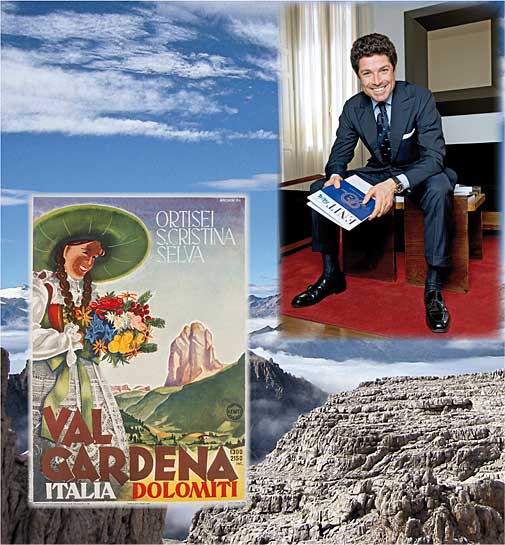
The Dolomites are my one and only true love, I have always been head over heels in love with them”. Confesses Matteo Marzotto, President of the ENIT – Agenzia Nazionale per il Turismo (National Tourism Agency) when we ask him to comment on the Dolomites.
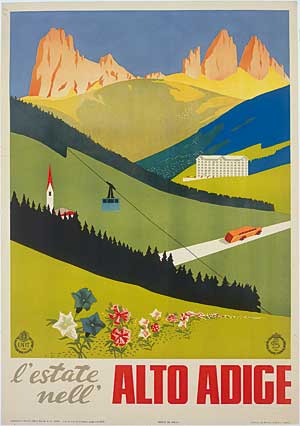 ENIT, Italy’s tourist promotion agency abroad, has always developed initiatives in order to introduce the natural, environmental, historical, cultural and artistic resources of our Country, communicating its values to the entire world and, at the same time, supplying services to Italian travel agencies and tour operators. ENIT, Italy’s tourist promotion agency abroad, has always developed initiatives in order to introduce the natural, environmental, historical, cultural and artistic resources of our Country, communicating its values to the entire world and, at the same time, supplying services to Italian travel agencies and tour operators.
But the special relationship between Marzotto and the “Monti Pallidi” (Pale Mountains) is not only due to professional purposes. He has explained that that feeling was born out of personal life experiences: “I grew up between Portogruaro and Cortina and the memory of those long strolls, of those bicycle races and downhill skiing after school still have a special place in my heart”.
So much that – he confesses again - “As soon as I have a free spot on my busy schedule, I go and spend time in that unique environment, that place that puts you in direct contact with the infinite”.
Actually, citing the infinite is anything but rhetorical when you talk about the Dolomites, in other words, a unique landscape that makes you perceive the immensity of time and space (“Are those stones or clouds? Are they real or is this a dream” Dino Buzzati asked himself).
Unesco’s decision, that in June 2009 placed the Dolomites amongst the most beautiful peaks of the world declaring them part of the World Heritage, infuses in Marzotto an omen that betrays this almost “filial” affection and respect that he has towards these mountains; “I hope that they can be seen with new eyes and with a bigger respect that one must have towards something that is so unique and precious, a heritage that we have received and that we must consider an excellent improvement opportunity for this mountain environment and all its specificity.
 Being President of the ENIT, he does not miss the chance of declaring: “The strength of our Country, with regards to tourism, is tied, on one side, to the fact that it has an environmental advantage: in fact, it can count on splendid views, unique environments, in short it is a Country that is beautiful in natural terms, aided also by cultural treasures. On the other hand, the entire world has always been envious of our so-called Italian lifestyle”. Being President of the ENIT, he does not miss the chance of declaring: “The strength of our Country, with regards to tourism, is tied, on one side, to the fact that it has an environmental advantage: in fact, it can count on splendid views, unique environments, in short it is a Country that is beautiful in natural terms, aided also by cultural treasures. On the other hand, the entire world has always been envious of our so-called Italian lifestyle”.
Matteo Marzotto, who is also a renowned businessman of the fashion world (you need only cite, apart from his family business, the maison Valentino and Madeleine Vionnet), has always been a great sports buff, “trained” by the mountain itself. In fact, as stated in his latest book entitled “Volare alto” (Flying High) (Mondadori, 2009): “To dream, but to do it rationally: is the life rule that I still abide by. I elaborated this rule beginning with my sports activities, during high school, after I returned to Cortina... Anyone can do almost anything, if he/she is willing to put a lot of time and effort into it”.
He is used to “training his lungs” on the Dolomites since he is a cycling fan, able to “grind away” over 5000 kilometres a year on his bike (the 127 kilometre tour from Dobbiamo to Val Badia or the “backbreaking” race to the Tre Cime di Lavaredo are amongst some of his favourite races): an experience that involves the body, the mind and the spirit.
By working hard and dreaming he has learned the natural way, from nature itself made up of the sea and mountains, a wild and, at the same time, new kingdom that pushes the human soul to discover the unknown, the hidden nature.
 Marzotto, who loves to describe himself as a “montanaro veneto” (Venetian mountainman), between Tofane and Cristallo, Croda da Lago and Sorapis, has lived in Cortina for twelve years (from childhood to part of his teen years) and still now visits the place frequently. That is why he knows many secrets and charms of the area between Veneto and Trentino-Alto Adige, ranging from entertainment and tradition, art to food and wine (by the way, his mother, Marta, says time and again that the best place to eat is Cortina, specifically....at her place). Yes, because it is clear that Dolomite dwellers also love “civilization”, strong values, the genius loci that allows people of different languages and cultures to share and live in a small rocky area. Marzotto, who loves to describe himself as a “montanaro veneto” (Venetian mountainman), between Tofane and Cristallo, Croda da Lago and Sorapis, has lived in Cortina for twelve years (from childhood to part of his teen years) and still now visits the place frequently. That is why he knows many secrets and charms of the area between Veneto and Trentino-Alto Adige, ranging from entertainment and tradition, art to food and wine (by the way, his mother, Marta, says time and again that the best place to eat is Cortina, specifically....at her place). Yes, because it is clear that Dolomite dwellers also love “civilization”, strong values, the genius loci that allows people of different languages and cultures to share and live in a small rocky area.
For this reason, when you talk about defending the spirit of that environment, Matteo Marzotto is always ready to defend it, going against anything that might ruin or damage the landscape, such as cement buildings or any other type of aesthetic intervention that in the name of modernity destroys a historic landscape (for example, he is strictly against the mega-project of a bypass in Cortina to resolve the traffic problem: “You don’t use cannons to kill mosquitoes, do you?” he has brilliantly commented). If it is true that it would be irrational to oppose oneself to the changes imposed by progress, it is also true that, in spite of mass tourism, a certain style must resist and with it sublime beauty, the bright oasis of silence, the flavour of happiness that only the “Monti Pallidi” know how to give (to experience this for only an instant all you have to do is think about the wonderful description given to the landscape by Goffredo Parise in his first Sillabario, who states “a white expanse where skis creak on the fresh layer of snow and the curious and frolicking deer run to hide on the rocky areas between pines and trees”).
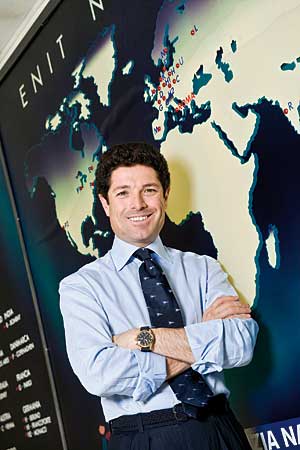 After all, his grandfather, Gaetano, had already thought of a sustainable tourism. Being a farsighted businessman he understood the accommodation facility business in the Alto Vicentino area. As Matteo explains in “Volare alto”: “As of the Twenties of the Nineteenth century the Marzotto family managed a hotel on the via di Recoaro…then, at the end of World War II, my grandfather, Gaetano, came up with a chain of hotels”. After all, his grandfather, Gaetano, had already thought of a sustainable tourism. Being a farsighted businessman he understood the accommodation facility business in the Alto Vicentino area. As Matteo explains in “Volare alto”: “As of the Twenties of the Nineteenth century the Marzotto family managed a hotel on the via di Recoaro…then, at the end of World War II, my grandfather, Gaetano, came up with a chain of hotels”.
More than once Marzotto has stated that he has experienced the ecstasy of paradise when he sees the Dolomites, that being “unique and magical” make him literally “feel right at home”. Maybe because they know how to move you just like soft music, reconciling us with ourselves and with the entire world.
He only knows too well that in the beauty of the scenery that frames Cortina, you can truly find a piece of eternity, that missing link that gives you a sense of life.
Dolomites as a metaphor of existence, therefore: fantastic and inalienable, full of difficult trails, sometimes even insuperable. However, worthy of a try.
The Poster
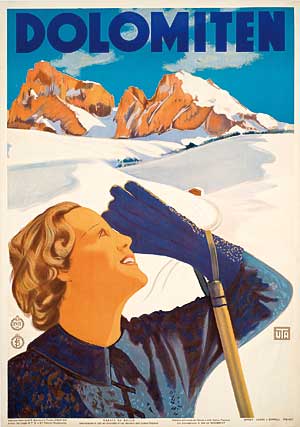 Those who took up this new challenge were genuine artists, not mere craftsmen, creating eloquent images and visual slogans. They put the same creative effort into the task as they would have done for a painting, a sculpture or an architectural design, and their aim was identical: the beauty of functionality as a function of beauty. Those who took up this new challenge were genuine artists, not mere craftsmen, creating eloquent images and visual slogans. They put the same creative effort into the task as they would have done for a painting, a sculpture or an architectural design, and their aim was identical: the beauty of functionality as a function of beauty.
Their effort was immensely rewarding, considering the cultural period in which posters and billboards reached their peak: that of the first, great, historical avant-garde artists, a period in which total experimentation combined with highly evolved technical equipment allowed for the production of images and ideas that had never been seen before, persistent icons in the daily life of the new common man, covering the walls or displayed in a shop window, at the entrance to a bar or in the pages of a magazine.
A new kind of objectivity was born, viewing the world as a huge and variegated market and everything in it as commodity which could become our own.
Renzo Orsini (art historian)
Posters published in TRAVEL ITALIA, available worldwide from Abrams - New York (2007), taken from the Alessandro Bellenda Private Collection.
Italian version published by Edizioni L'Ippocampo, Milan (2008).
|
 NUMBER 9
NUMBER 9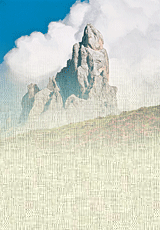


 ENIT, Italy’s tourist promotion agency abroad, has always developed initiatives in order to introduce the natural, environmental, historical, cultural and artistic resources of our Country, communicating its values to the entire world and, at the same time, supplying services to Italian travel agencies and tour operators.
ENIT, Italy’s tourist promotion agency abroad, has always developed initiatives in order to introduce the natural, environmental, historical, cultural and artistic resources of our Country, communicating its values to the entire world and, at the same time, supplying services to Italian travel agencies and tour operators. Being President of the ENIT, he does not miss the chance of declaring: “The strength of our Country, with regards to tourism, is tied, on one side, to the fact that it has an environmental advantage: in fact, it can count on splendid views, unique environments, in short it is a Country that is beautiful in natural terms, aided also by cultural treasures. On the other hand, the entire world has always been envious of our so-called Italian lifestyle”.
Being President of the ENIT, he does not miss the chance of declaring: “The strength of our Country, with regards to tourism, is tied, on one side, to the fact that it has an environmental advantage: in fact, it can count on splendid views, unique environments, in short it is a Country that is beautiful in natural terms, aided also by cultural treasures. On the other hand, the entire world has always been envious of our so-called Italian lifestyle”. Marzotto, who loves to describe himself as a “montanaro veneto” (Venetian mountainman), between Tofane and Cristallo, Croda da Lago and Sorapis, has lived in Cortina for twelve years (from childhood to part of his teen years) and still now visits the place frequently. That is why he knows many secrets and charms of the area between Veneto and Trentino-Alto Adige, ranging from entertainment and tradition, art to food and wine (by the way, his mother, Marta, says time and again that the best place to eat is Cortina, specifically....at her place). Yes, because it is clear that Dolomite dwellers also love “civilization”, strong values, the genius loci that allows people of different languages and cultures to share and live in a small rocky area.
Marzotto, who loves to describe himself as a “montanaro veneto” (Venetian mountainman), between Tofane and Cristallo, Croda da Lago and Sorapis, has lived in Cortina for twelve years (from childhood to part of his teen years) and still now visits the place frequently. That is why he knows many secrets and charms of the area between Veneto and Trentino-Alto Adige, ranging from entertainment and tradition, art to food and wine (by the way, his mother, Marta, says time and again that the best place to eat is Cortina, specifically....at her place). Yes, because it is clear that Dolomite dwellers also love “civilization”, strong values, the genius loci that allows people of different languages and cultures to share and live in a small rocky area. After all, his grandfather, Gaetano, had already thought of a sustainable tourism. Being a farsighted businessman he understood the accommodation facility business in the Alto Vicentino area. As Matteo explains in “Volare alto”: “As of the Twenties of the Nineteenth century the Marzotto family managed a hotel on the via di Recoaro…then, at the end of World War II, my grandfather, Gaetano, came up with a chain of hotels”.
After all, his grandfather, Gaetano, had already thought of a sustainable tourism. Being a farsighted businessman he understood the accommodation facility business in the Alto Vicentino area. As Matteo explains in “Volare alto”: “As of the Twenties of the Nineteenth century the Marzotto family managed a hotel on the via di Recoaro…then, at the end of World War II, my grandfather, Gaetano, came up with a chain of hotels”. Those who took up this new challenge were genuine artists, not mere craftsmen, creating eloquent images and visual slogans. They put the same creative effort into the task as they would have done for a painting, a sculpture or an architectural design, and their aim was identical: the beauty of functionality as a function of beauty.
Those who took up this new challenge were genuine artists, not mere craftsmen, creating eloquent images and visual slogans. They put the same creative effort into the task as they would have done for a painting, a sculpture or an architectural design, and their aim was identical: the beauty of functionality as a function of beauty.